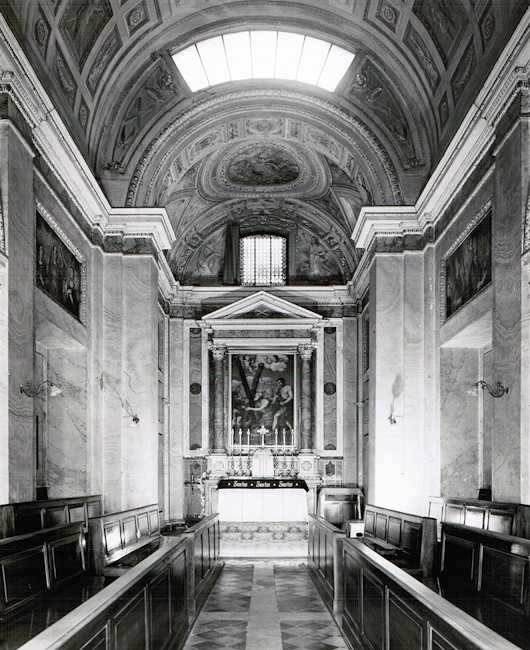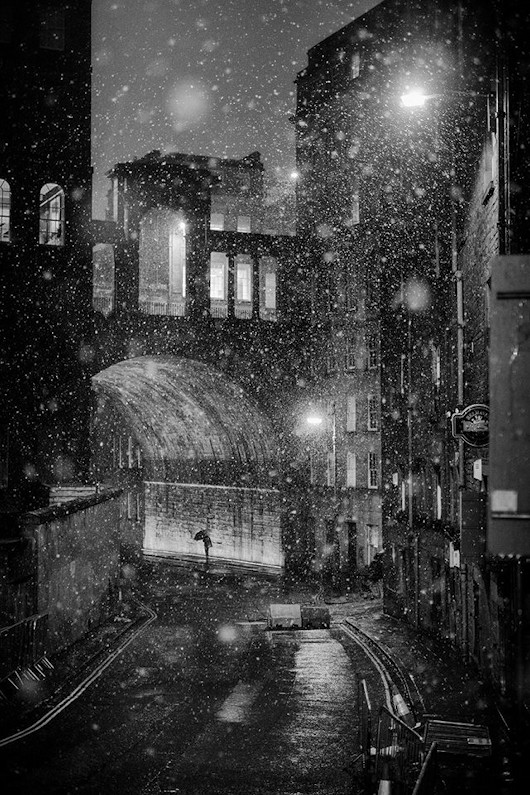Scotland
About Andrew Cusack
 Writer, web designer, etc.; born in New York; educated in Argentina, Scotland, and South Africa; now based in London.
Writer, web designer, etc.; born in New York; educated in Argentina, Scotland, and South Africa; now based in London. read more
News
Blogs
Reviews & Periodicals
Arts & Design
World
France
Mitteleuropa
Knickerbockers
Argentina
The Levant
Africa
Cape of Good Hope
Netherlands
Scandinavia
Québec
India
Muscovy
Germany
Academica
Articles of Note: 29 January 2024

A lively Doubleyoo-Ess once took me to lunch at the New Club and, in whispered tones, pointed out a gentleman sitting at another table.
“He is the world’s leading expert on the Scots tongue,” my friend explained.
“But he was excommunicated by all the other experts on Scots when he pointed out that eighty per cent of Scots words are interchangeable with Northumbrian English.”
Scots is fascinating for its closeness to English and its distinction. Those who’ve had the pleasure of tarrying awhile in the Netherlandic world (whether in Europe, the Cape of Good Hope, or elsewhere) can detect the odd affinities to Dutch and Afrikaans — reminding you that the North Sea was once a highway, not a barrier.
Luka Ivan Jukic has written an enlightening exploration of how and why Scotland lost its tongue.
Jukic contends there are no signs of revival, which I dispute. There is a much increased interest in the use of Scots, but it feels contrived and falls somewhat flat. If you take a look at the Scots column in The National newspaper, it comes across as the ravings of a kook something akin to Anglish.
■ Amongst the many of Scotland’s joys is the pleasure of just looking at its buildings.
Witold Rybczynski pleads “Give us something to look at!” in his account of why ornament matters in architecture.

■ The New York Post — founded by Alexander Hamilton in 1801 and thus the Empire State’s oldest and most venerable newspaper — reports that the world’s oldest and most venerable forest has been discovered right in the heart of the Catskill Mountains.
This is one of the most beautiful places in America, especially when the leaves begin to turn in autumn, and features widely in the old stories transcribed by Washington Irving and others.
The name of the Catskills is believed to be from the catamounts that used to roam the woods and bergs when our Dutch forefathers of old first arrived in the valley of the Hudson. Our earliest record of it is on a map by Nicolaes Visscher père from 1656 — and pleasingly the local magazine retains the old spelling in its name of Kaatskill Life.
This fossilised forest within the Catskills is believed to date from 385 million years ago (for those who doubt the Ussher chronology — and we remain open-minded ourselves) and was discovered at the bottom of an old quarry.
■ As a precocious teenager I remember a visit to the maritime museum in Rochefort on France’s Atlantic coast that included a fascinating display of the intricacies and accomplishments of global shipping, housed in the long old ropeworks that kept France’s navy afloat in the era of sail.
It’s all been kicking off in the Red Sea, which inspired Wessie du Toit to write that the shipping container is an uncanny symbol of modern life
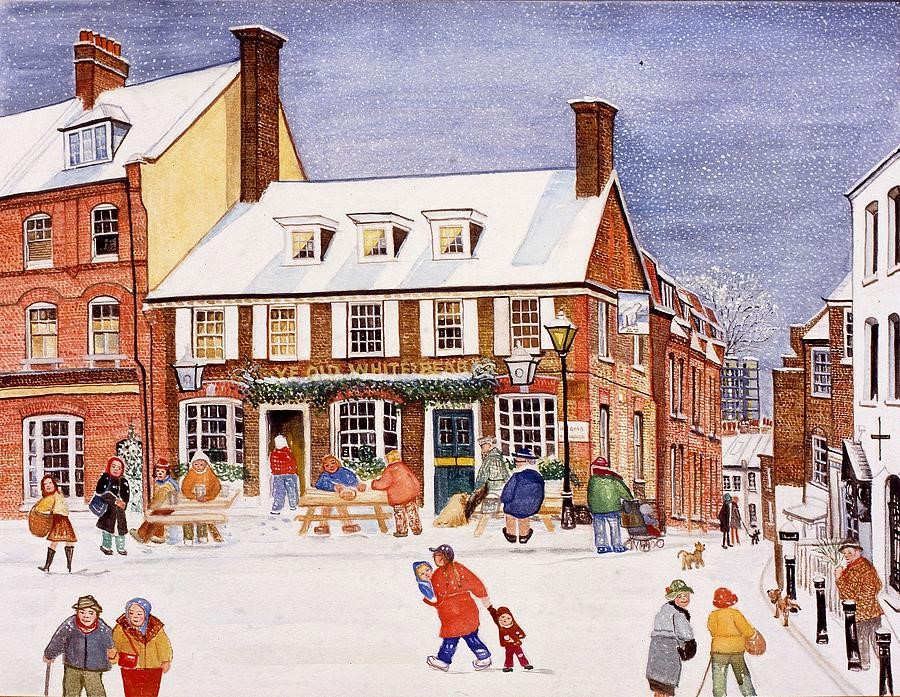
■ Some people claim there is no life outside of NW3, but as much a fan of Hampstead as I am, my first loyalty in London neighbourhoods is firmly lodged in Southwark. (Pimlico is high on the list, too.)
Many will pine for those precious late summer afternoons idly dawdling on the Heath, but Hampstead in winter has its distinct pleasures. For me, it’s curdling up with a pile of books beside the coal fire in the Old White Bear.
In the Christmas issue of The Oldie, Peter York wrote about the rise and fall of arty Hampstead.
■ One of our Hampstead mates is originally a West Country man and now finds himself even further west, studying law in California.
For a New Yorker, California is The Great Other. If not quite a rival, then certainly something we are always being compared against.
Naturally, one looks down on California, but also with a certain envy. If ever America had a golden moment when imperial might was combined with the simple goodness of life, it must have been coastal California from the 1930s to 1960s — with a hint of survival into the 1980s.
California’s decline is evident to all, though its power and influence is still vast (as the iPhone in your pocket proves). The Manhattan Institute recently devoted an entire issue to the question of Can California Be Golden Again?
I haven’t had a chance to read much of it, but I did enjoy Jordan McGillis’s article on how San Diego retains many of the qualities that once made California the envy of the world.
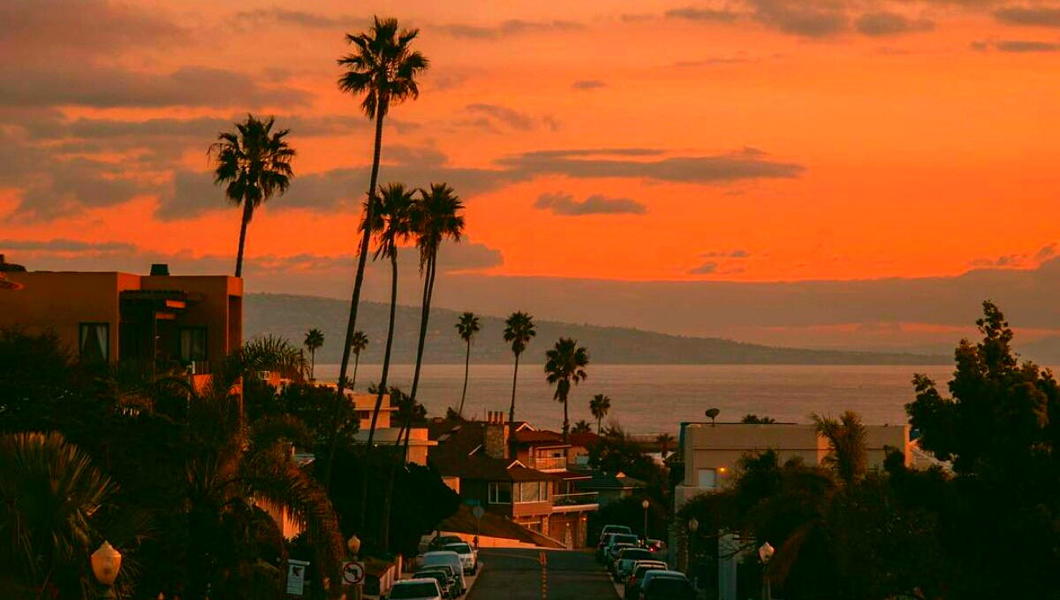
■ Peter Viereck ranks amongst the names of slightly neglected thinkers in the agora of American conservatism. Reading him always brings some insight, but I never knew much about the man himself.
Samuel Rubinstein supplies a fascinating account of the man and his thinking in Peter Viereck: Psychoanalyst of Nazism.
■ National treasure Peter Hitchens has spent his life hating the ogre Ted Heath, destroyer of worlds. I will never forgive him for what he did to England’s ancient counties and boroughs.
But Hitchens the Heath Hater, with his typically thoughtful approach, offers a reconsideration of the man.
■ All politics is local: Fred de Fossard writes about how EU-obsessed Lib Dems are ruining Bath rather than guarding one of the most precious jewels of English cities.
■ We leave you with this six-colour lithograph from the Pretoria-based artist Nina Torr entitled ‘Here we go again’ (an edition of thirty, available from the Artists’ Press):
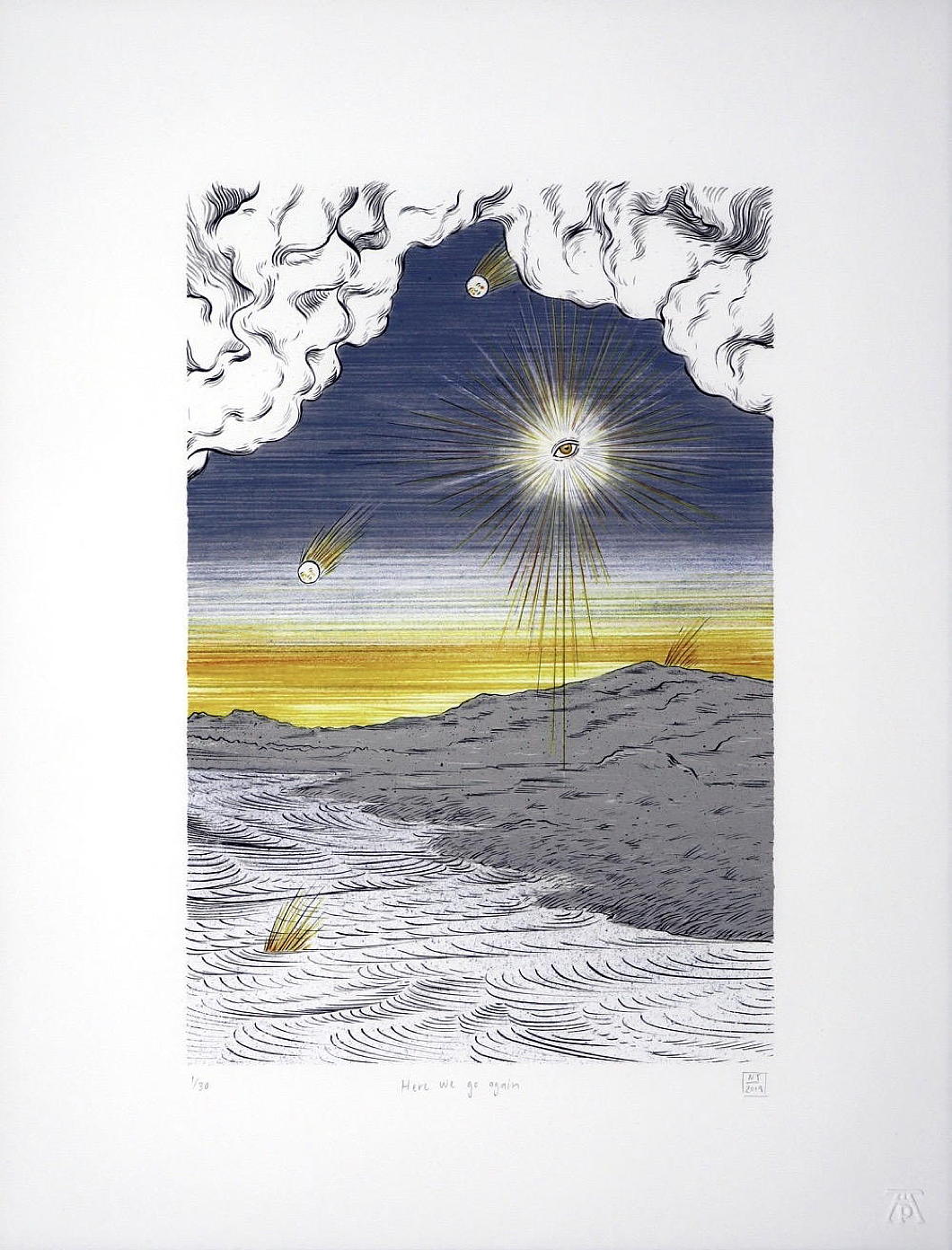
Articles of Note: 6 January 2024

■ I had the great privilege of studying French Algeria under the knowledgeable and congenial Dr Stephen Tyre of St Andrews University and the country continues to exude an interest. The Algerian detective novelist Yasmina Khadra — nom de plume of the army officer Mohammed Moulessehoul — has attracted notice in Angledom since being translated from the Gallic into our vulgar tongue.
Recently the columnist Matthew Parris visited Algeria for leisurely purposes and reports on the experience.
■ While you’re at the Spectator, of course by now you should have already studied my lament for the excessive strength of widely available beers — provoked by the news that Sam Smith’s Brewery have increased the alcohol level of their trusty and reliable Alpine Lager.
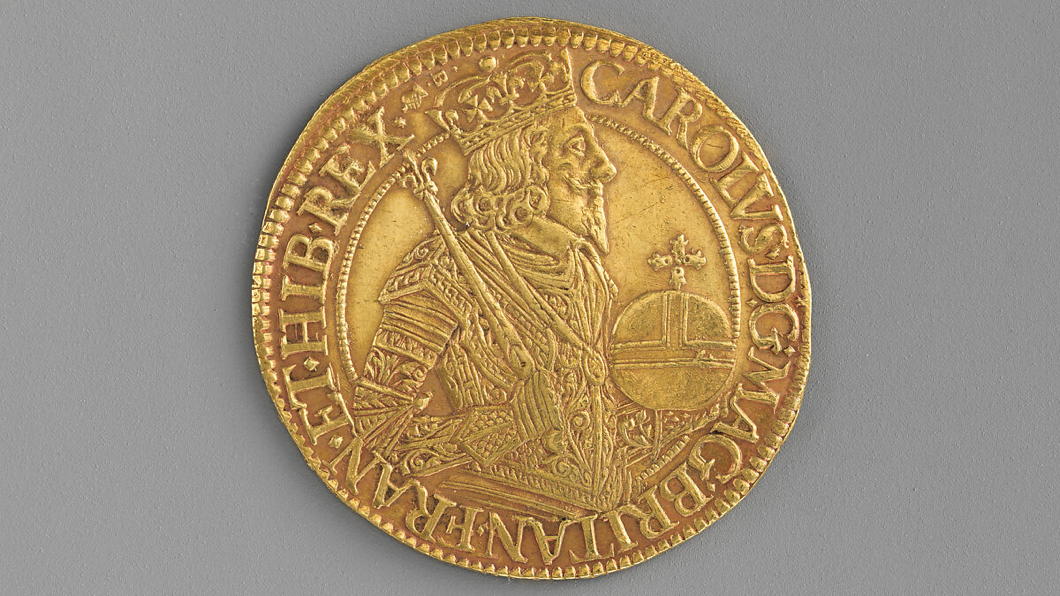
■ This week Elijah Granet of the Legal Style Blog shared this numismatic gem. It makes one realise quite how dull our coin designs are these days. I don’t see why we shouldn’t have an updated version of this for our currently reigning Charles.
■ Meanwhile Chris Akers of Investors Chronicle and the Financial Times has gone on retreat to Scotland’s ancient abbey of Pluscarden and written up the experience for the FT. As he settled into the monastic rhythm, Chris found he was unwinding more than he ever has on any tropical beach.
Pluscarden is Britain’s only monastic community now in its original abbey, the building having been preserved — albeit greatly damaged until it was restarted in 1948. The older Buckfast is also on its original site but was entirely razed by 1800 or so and rebuilt from the 1900s onwards. (Pluscarden also has an excellent monastic shop.)
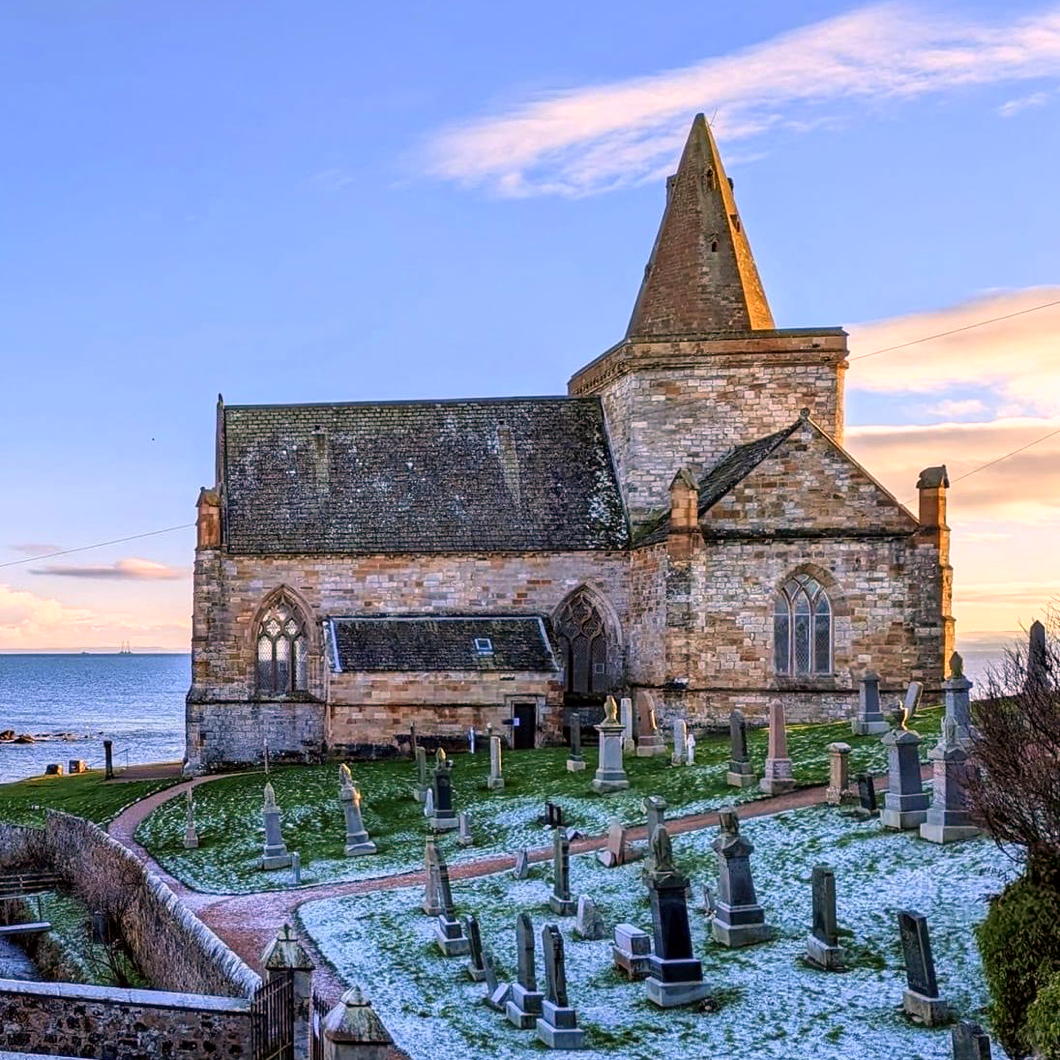
■ An entirely different and more disappointing form of retreat in Scottish religion is the (Presbyterian) state kirk’s decision to withdraw from tons of their smaller churches. St Monans is one of the mediæval gems of Fife, overlooking the harbour of the eponymous saint’s village since the fourteenth century, and built on the site of an earlier place of worship.
Cllr Sean Dillon pointed out the East Neuk is to lose six churches — some of which have been in the Kirk’s hands since they were confiscated at the Reformation, including St Monans.
John Lloyd, also of the FT, reported on this last summer and spoke to my old church history tutor, the Rev Dr Ian C. Bradley. More on the closures in the Courier and Fife Today.
What a dream it would be for a charitable trust to buy St Monans and to restore it to its appearance circa 1500 or so, available as a place of worship and as a living demonstration of Scotland’s rich and polychromatic culture that was so tragically destroyed in the sixteenth century. You could open with a Carver Mass conducted by Sir James MacMillan.
■ And finally, on the last day of MMXXIII, the architect Conor Lynch reports in from Connemara with this scene of idyllic bliss:
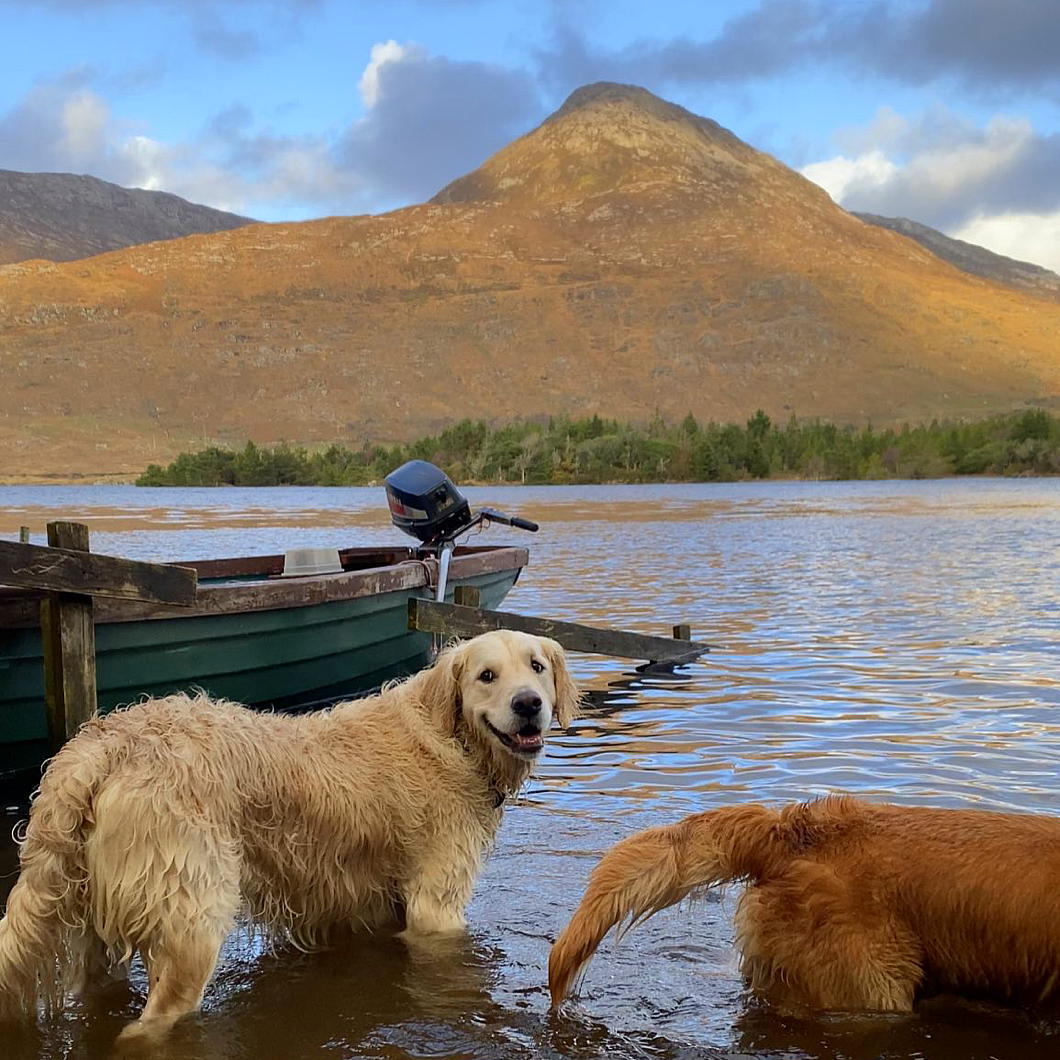
St Margaret Relic Heads to St Andrews
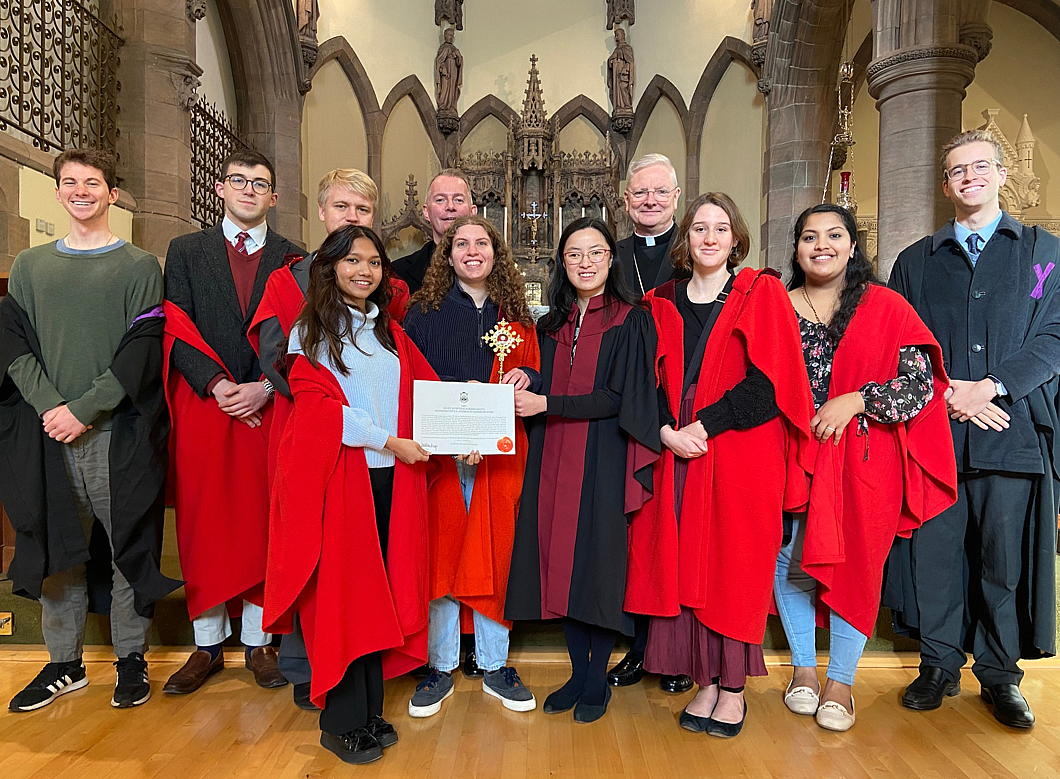
Students from St Andrews University have accompanied their Catholic chaplain to receive a relic of St Margaret of Scotland from the Archbishop of St Andrews & Edinburgh, Dr Leo Cushley.
The relic was put in the care of Canmore, the Catholic chaplaincy at St Andrews, whose chapel is dedicated to the Hungary-born English princess who became Scotland’s saintly queen.
When the relic in St Margaret’s Church in Dunfermline — the country’s royal centre in the twelfth and thirteenth centuries — were being removed from their reliquary the piece of bone fragmented.
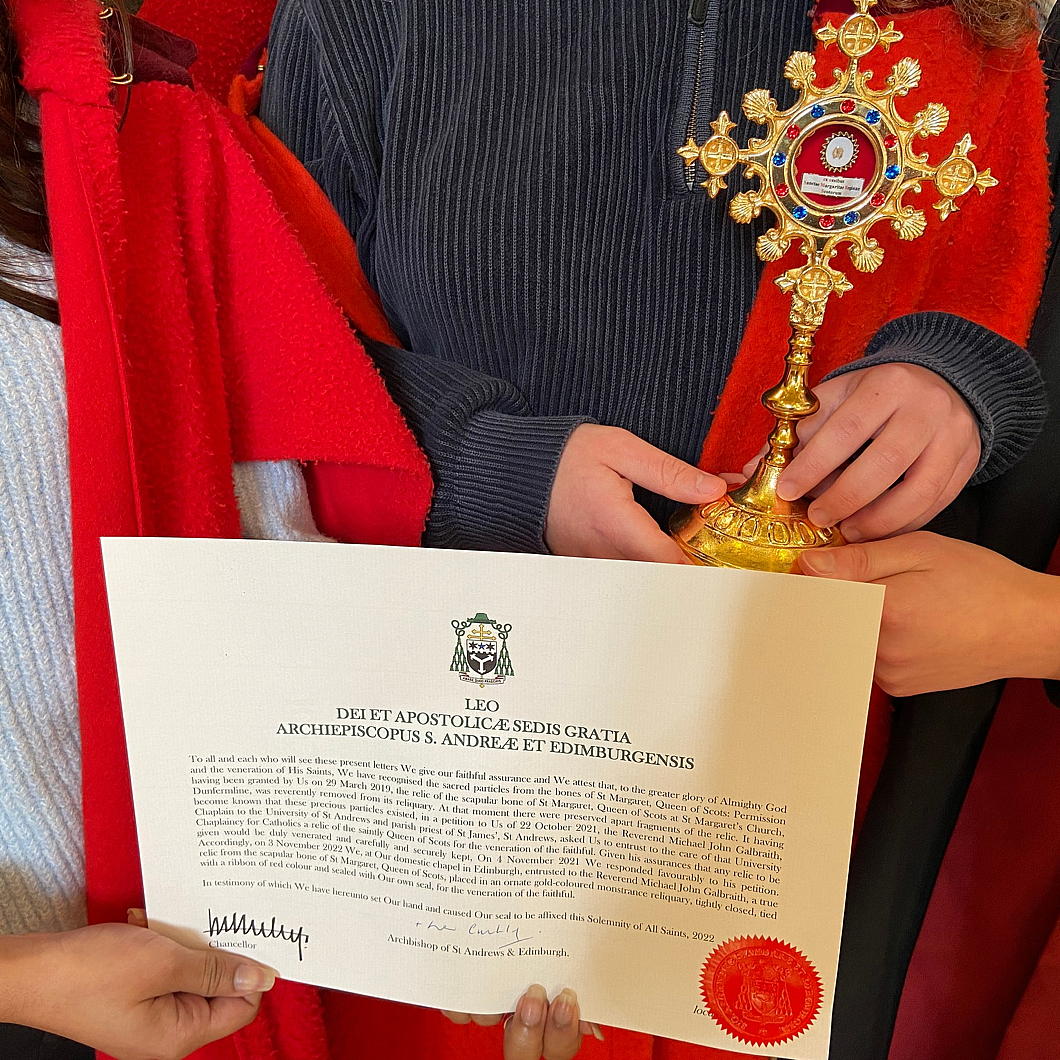
The Archdiocese decided to make this an opportunity for the relics of the royal saint to be distributed further.
This relic of St Margaret will remain in Canmore where it will be available for veneration by students and other visitors.
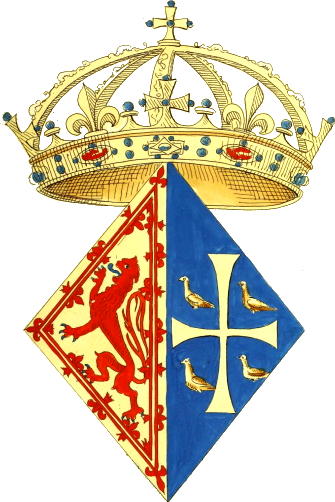
SAINT MARGARET
QUEEN OF SCOTLAND
pray for us
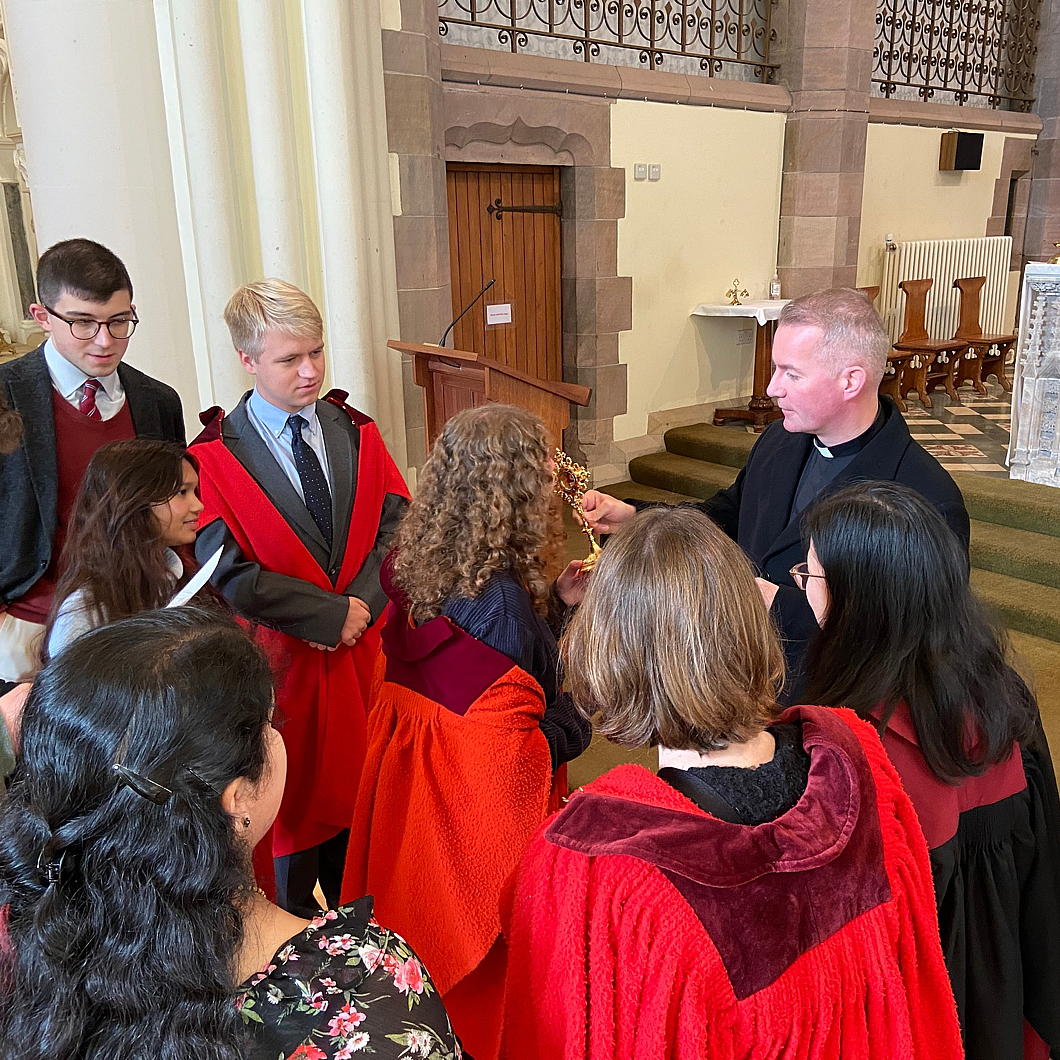
Mrs Evelyn Pelosi
I’ve only just heard of the death of Mrs Evelyn Pelosi, who departed this life at the end of last month.
Evelyn was piously devoted to the traditional liturgy of the Church and was a stalwart of the SSPX’s Edinburgh congregation — but she never stood in the way of houseguests attending the FSSP (or even the Novus Ordo!).
Her mischievous deadpan sense of humour was deployed to excellent effect in her occasional role as gypsy fortuneteller at festive events organised by the South Edinburgh Conservatives in the 1990s.
Another hat she wore was Convenor of the Monarchist League of Scotland (an entity whose events attracted a curious clientele) and from an early age she had a great devotion to South Africa where she visited me in Stellenbosch and introduced me to friends in the pro-life movement in Cape Town.
In the Seventies and Eighties, whenever she thought journalists in the Caledonian dailies were too forgiving of occasional terrorist outrages by the ANC their editorial offices frequently found themselves in receipt of a letter signed by Mrs E. Pelosi, Friends of Christian South Africa.
Mangosutho Buthelezi was among the many well-wishers whose cards could be found overflowing on the chimneypiece of her home in the Mayfield Road.
I remember watching the premier of the television version of Alexander McCall Smith’s “The No. 1 Ladies’ Detective Agency” at her’s there on Easter Sunday evening in 2008 — an Edinburgh/Southern Africa crossover event if ever there was one.
She was amused but dignified when another woman of her marital surname (but radically different views) ascended the political scene across the Atlantic, but for anyone who knew her Evelyn will always be the only Mrs Pelosi.
May she rest in peace.
Staats Long Morris
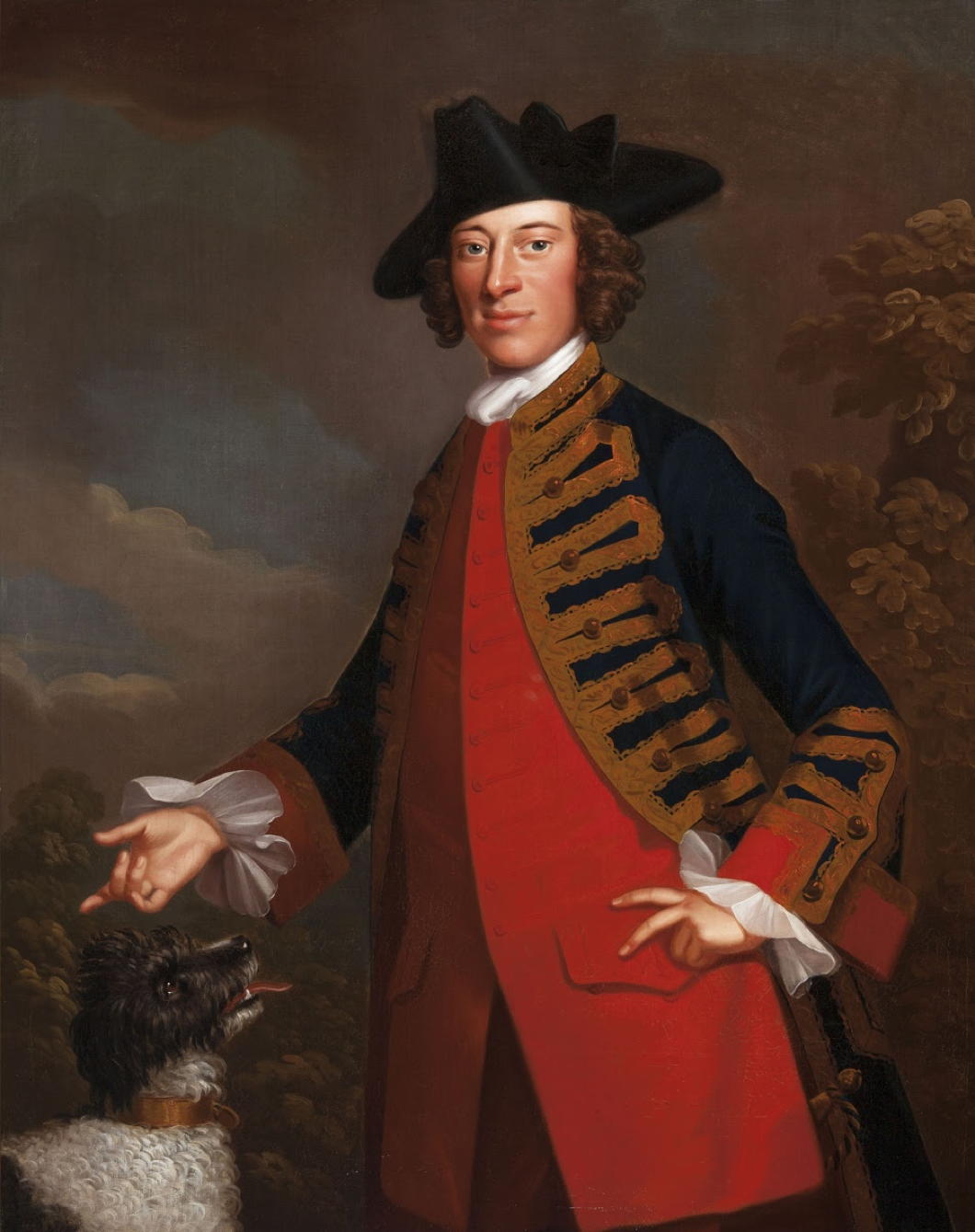
Everyone knows about Gouverneur Morris, scion of one of New York’s great landowning families and given the moniker ‘penman of the Constitution’. As a signer of the Declaration of Independence his half-brother Lewis Morris III was a fellow ‘founding father’. Less well-remembered is his other half-brother Staats Long Morris (1728–1800).
Their father Lewis Morris II was the second lord of Morrisania, the feudal manor that covered most of what is now the South Bronx and has given its name to the smaller eponymous neighbourhood today.
Staats and Gouveneur owe their distinctive Christian names to the family names of their respective mothers.
Lewis II married Katrintje Staats who provided him with four children. After Katrintje died in 1730, Lewis married Sarah Gouverneur, daughter of the Amsterdam-born Isaac Gouverneur. Sarah’s uncle Abraham was Speaker of the General Assembly of the Province of New York, a role Lewis Morris II eventually filled.
Staats was born at Morrisania on 27 August 1728 and studied at Yale College in neighbouring Connecticut as well as serving as a lieutenant in New York’s provincial militia. He switched to the regular forces in 1755 when he obtained a commission as captain in the 50th Regiment of Foot, moving to the 36th in 1756.
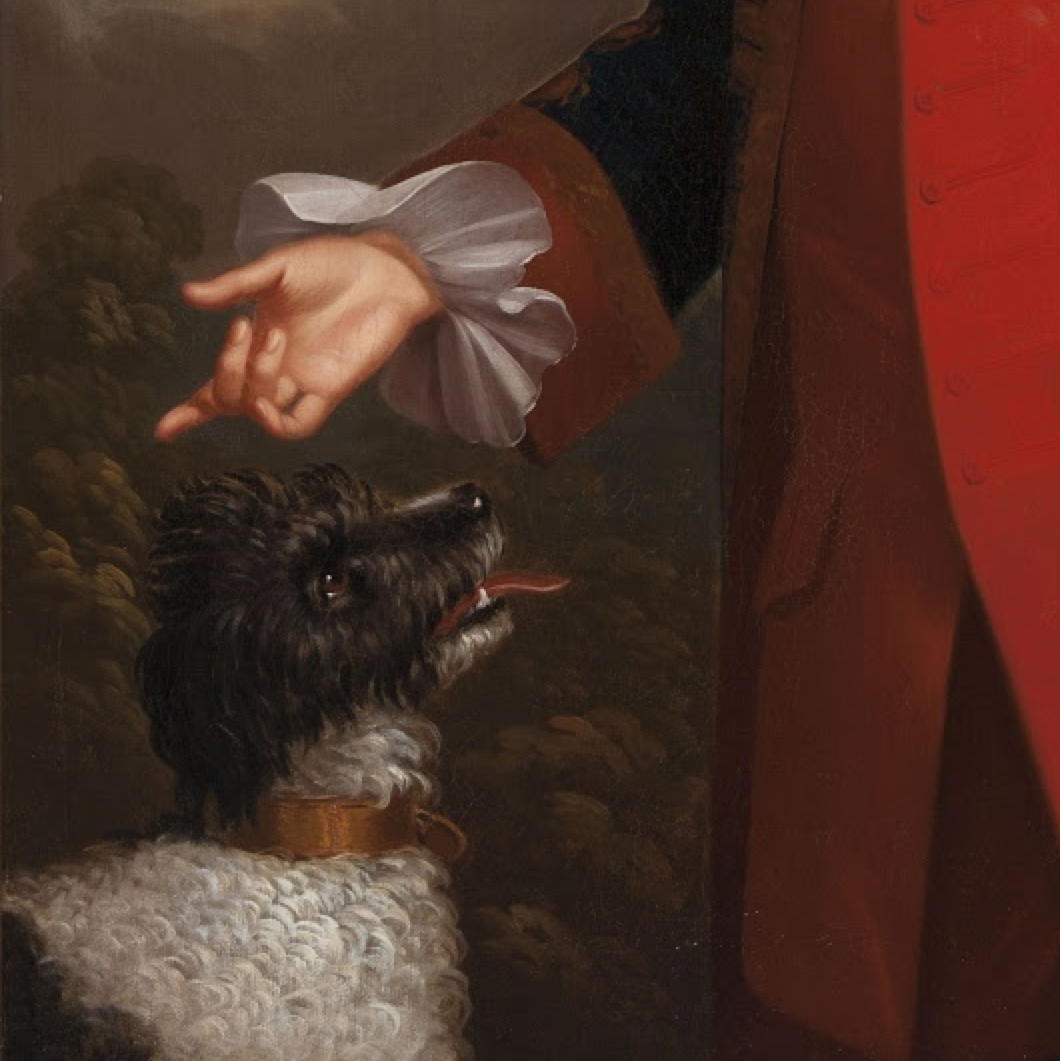
Around that time Catherine, Duchess of Gordon, the somewhat eccentric widow of the third duke, was on the lookout for a second husband and Staats — though American, mere gentry, and ten years her junior — met with her approval. They were married in 1756 and Staats moved in to Gordon Castle to live as the Dowager Duchess’s husband.
‘He conducted himself in this new exaltation with so much moderation, affability, and friendship,’ a newspaper reported in 1781, ‘that the family soon forgot the degradation the Duchess had been guilty of by such a connexion, and received her spouse into their perfect favour and esteem.’
With the Duchess’s patronage, Lieutenant-Colonel Staats raised the 89th Regiment of Foot — “Morris’s Highlanders” — from the Scottish counties of Aberdeenshire and Banffshire though she was extremely cross when her new husband’s regiment was despatched to India where it took part in the siege of Pondichery.
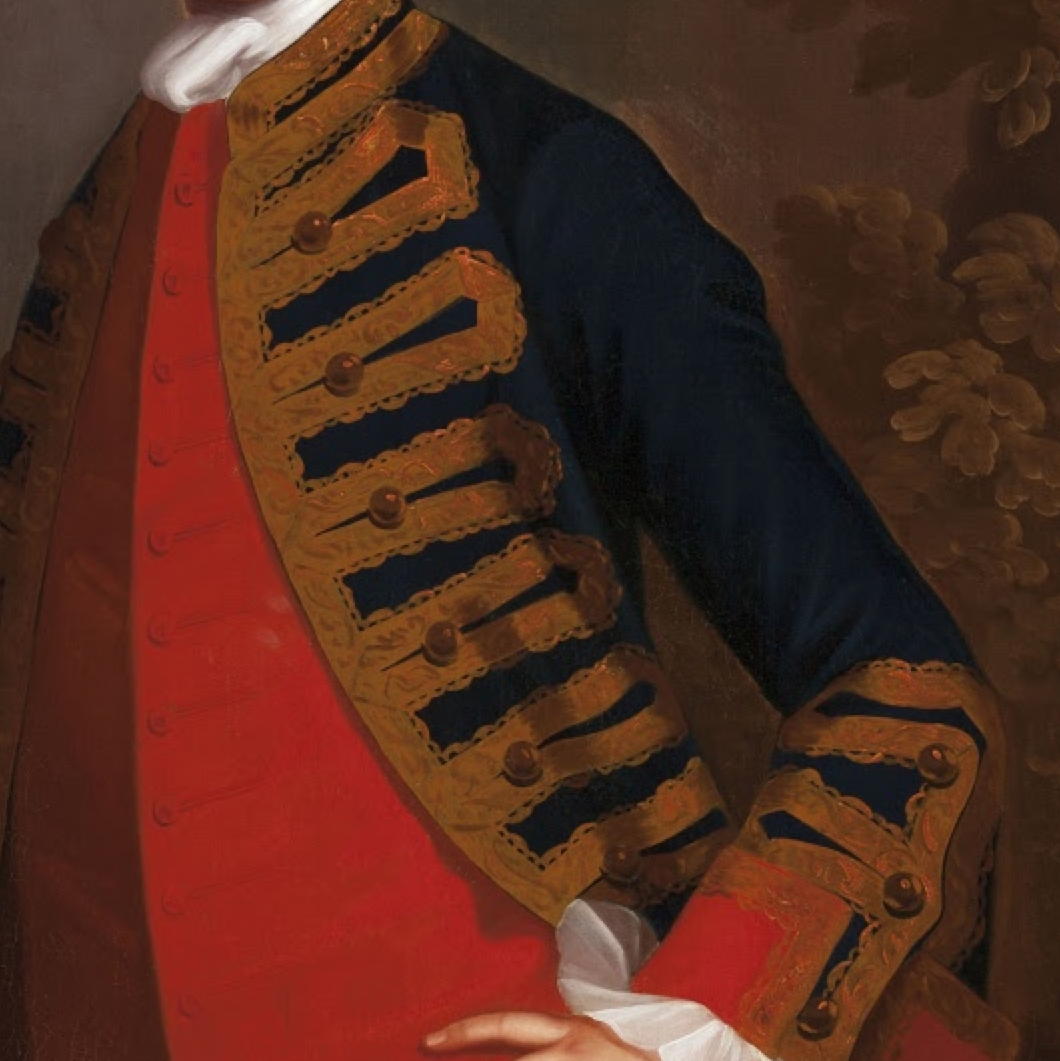
In the event, Morris delayed following his regiment to India, leaving England in April 1762 and remaining there only until December 1763. When the young fourth Duke of Gordon came of age the following year, Staats turned his eyes to America and engaged in land speculation there. In 1768 he and the Duchess even went to visit their purchases in the new world, returning to Scotland in the summer of the following year.
With the fourth Duke’s help, and on the eve of the revolutionary stirrings in North America, Staats was elected to the British parliament for the Scottish seat of Elgin Burghs in 1774. He managed to hold on to it for the next ten years. Was this New Yorker the first Yale man to be elected to Parliament? I can’t find any before him, but more thorough research might prove fruitful.
In 1786 he inherited the manor of Morrisania but with the intervening separation between Great Britain and most of her Atlantic colonies General Morris thought it best to sell it on to his brother Gouverneur.
Though he had rejected a future in the world into which he had been born, Staats did return to North America in a professional capacity in 1797 when he was appointed governor of the military garrison at Quebec in what by then was Lower Canada.
Morris died there in January 1800, but his earthly remains were sent back to Britain where he was interred in Westminster Abbey — the only American to receive that honour.
The Galloway Cross
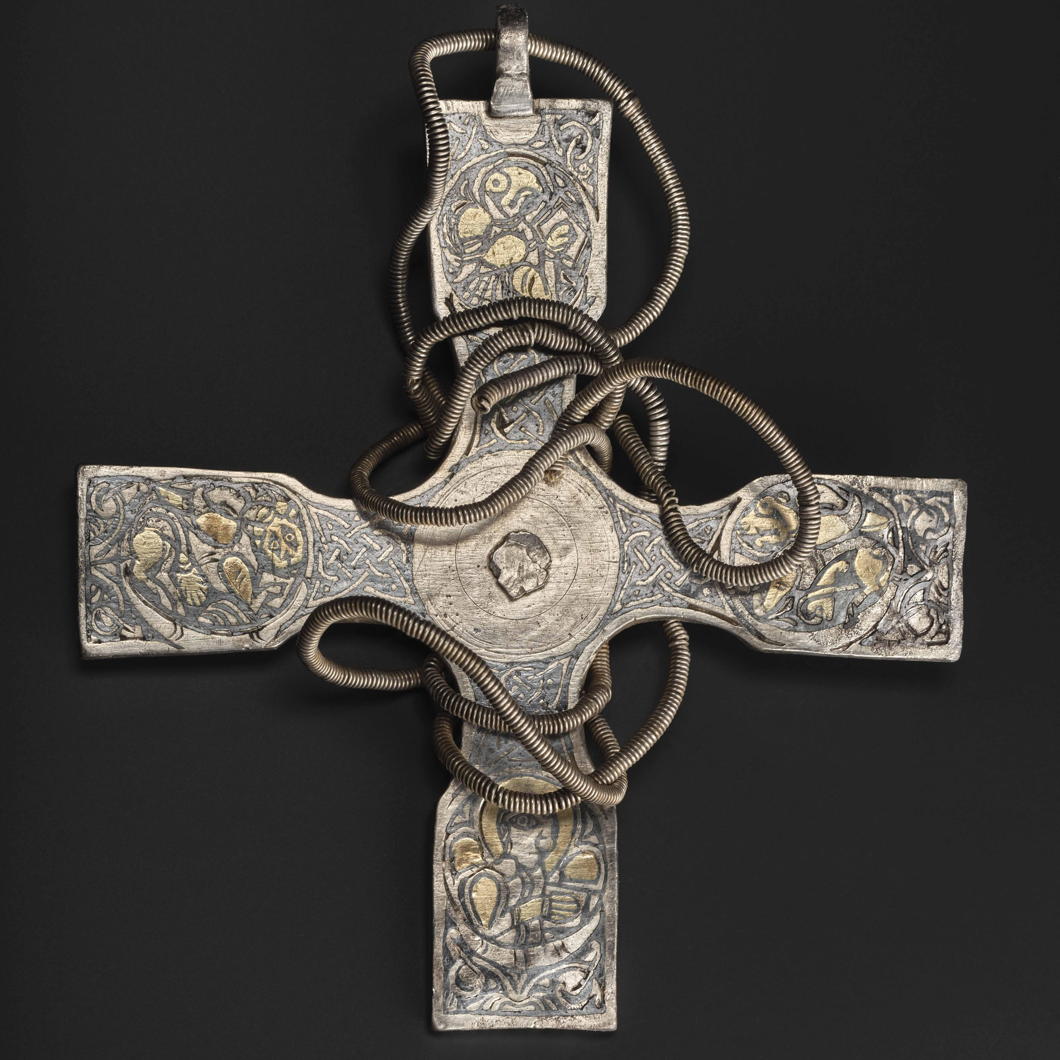
What could be better than a hoard — and a Kircudbrightshire hoard at that? Sometime during the tenth century, a gentleman decided to deposit an interesting array of objects in Galloway only for them to be rediscovered by a metal detectorist in 2014.
Thus have come to us the Galloway Hoard, a collection of objects the most important of which is this pectoral cross made of silver and decorated with symbols of the four evangelists: the eagle of John, the ox of Luke, the angel of Matthew, and the lion of Mark.
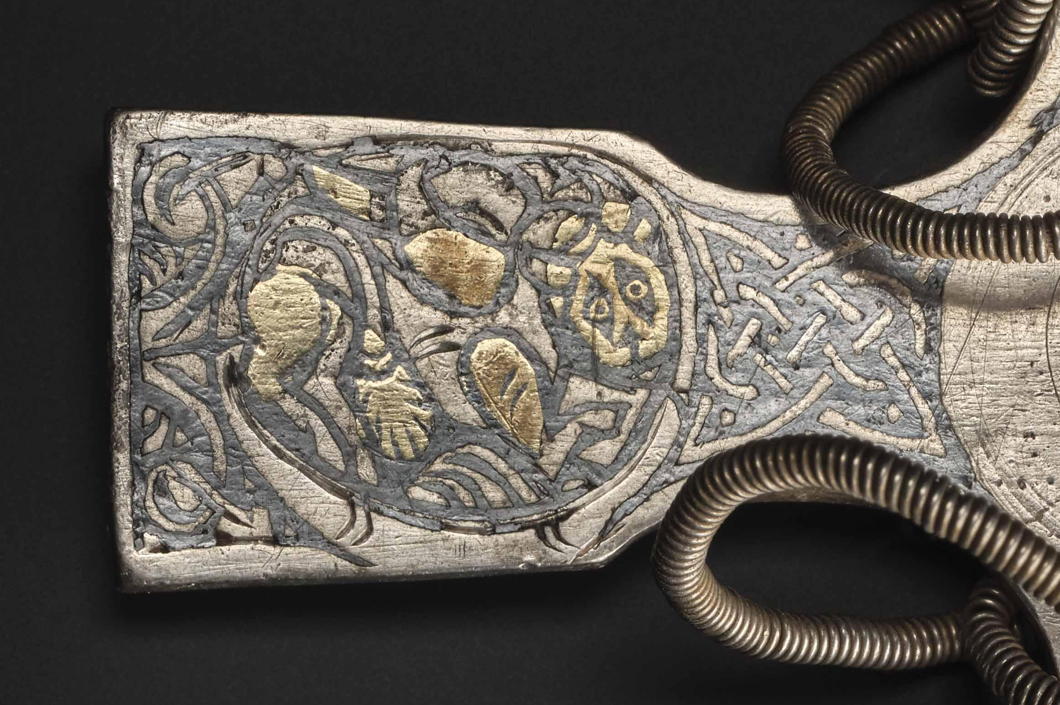
As the hoard was buried when Kircudbrightshire was part of Northumbria — before the area became Scottish — the art has been identified as Anglo-Saxon from the age of the Vikings. My theory is an expert thief was at work, nicking precious objects from hapless victims — an armband gives the name of one poor Egbert in runes.
“The pectoral cross, with its subtle decoration of evangelist symbols and foliage, glittering gold and black inlays, and its delicately coiled chain, is an outstanding example of the Anglo-Saxon goldsmith’s art,” Dr Leslie Webster, an expert, said. “It was made in Northumbria in the later ninth century for a high-ranking cleric, as the distinctive form of the cross suggests.”
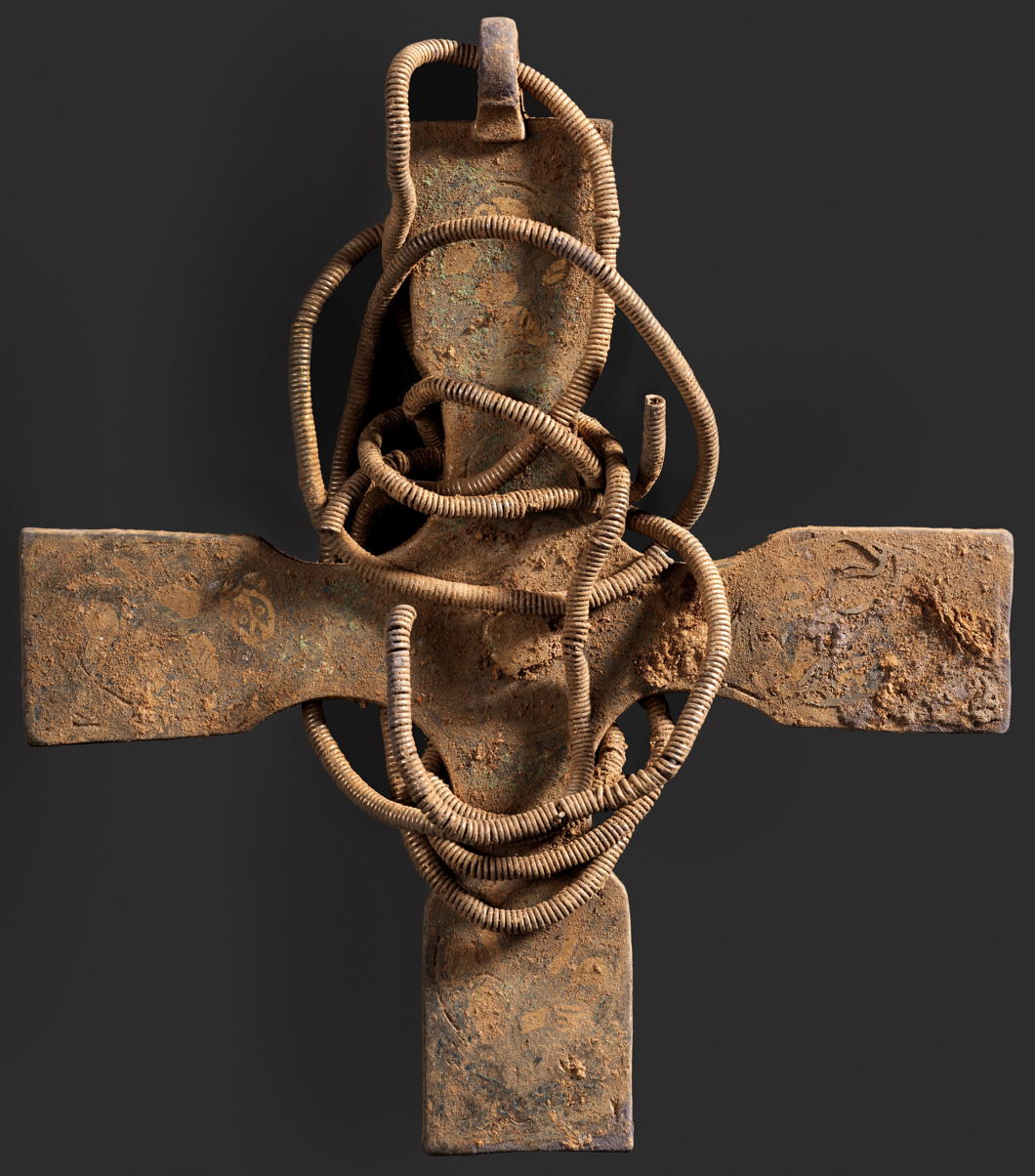
The Galloway Cross, before cleaning and conservation
All treasure found in Scotland must be reported to the Queen’s and Lord Treasurer’s Remembrancer who in 2017 determined the hoard’s value at £1.8 million. Scots law allows the discoverer to keep the full value of the hoard if there is no owner, though as it was found on glebelands belonging to the Church of Scotland that body’s General Trustees demanded a cut as well.
The objects themselves have found a home in the National Museum of Scotland who will be exhibiting them from February until May when they will go on tour to Aberdeen and Dundee.
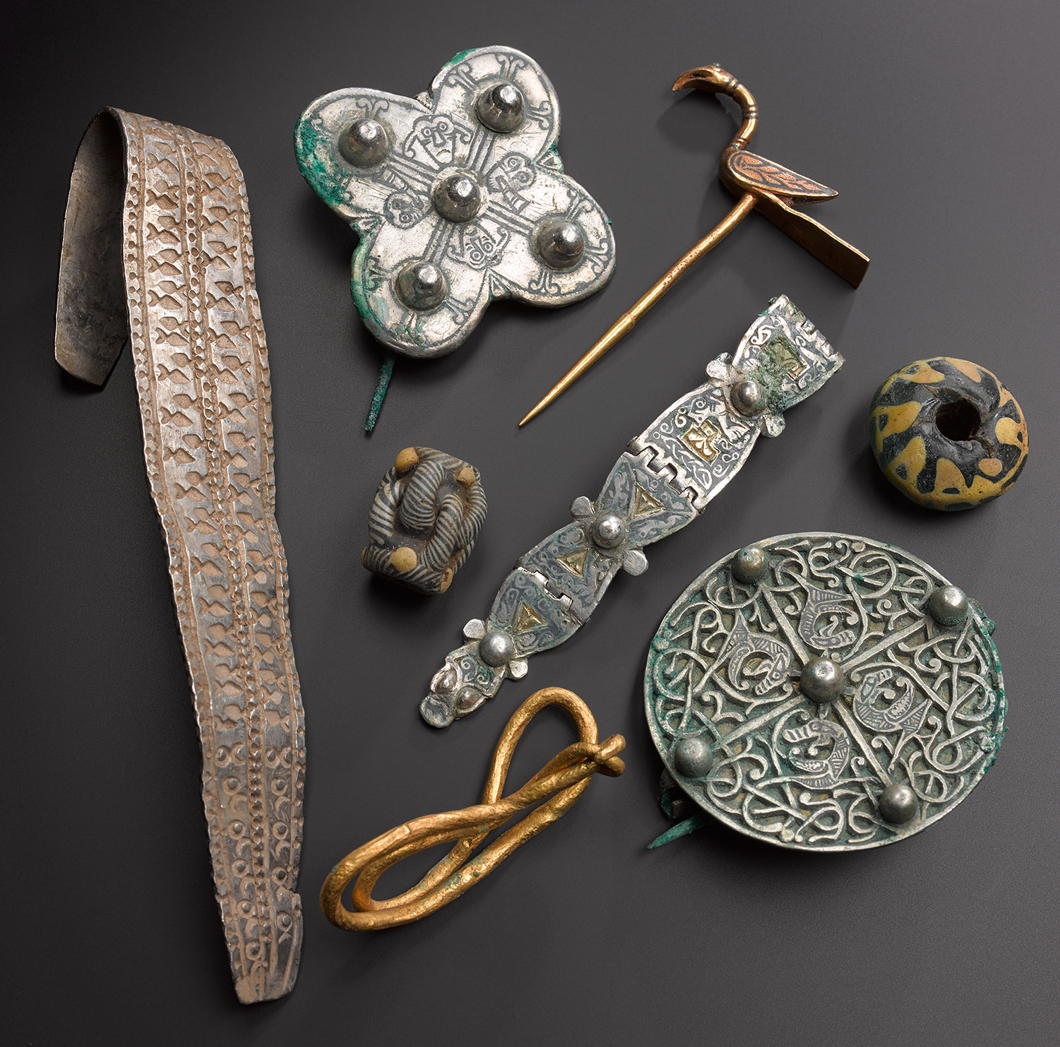
The Old Scots College
Via delle Quattro Fontane, Rome
Next month I’m off to Rome and the last time I was there I happened to walk past the old Scots College on the via delle Quattro Fontane. The Pontifical Scots College is probably the oldest Scottish institution abroad and certainly one of the most important, both historically and today. As Scotland’s primary seminary it has — almost literally — helped form the soul of the country, particularly during times of widespread persecution back in the mother country.
The church of Sant’Andrea degli Scozzesi (St Andrew of the Scots) was built in 1592 during the reign of Clement VIII, and early in the seventeenth century the church and neighbouring hospice were given over to the Scots College which had been founded a few years before. The seminary building itself was (I believe) built much later, in the nineteenth century after the college briefly ceased instruction due to the tumult of the French Revolution.
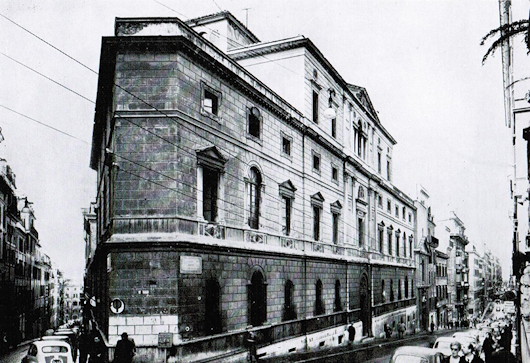
Sadly the building was not very well maintained and by 1960 it was falling apart. It was decided to sell the old college buildings in the Via delle Quattro Fontane and move to a larger site out the middle of nowhere in the Via Cassia. The move was made in 1964, and the Scots College has remained there ever since, while the old college housed a bank for many years and more recently a lawfirm.
The Red Mass in Edinburgh
The opening of Scotland’s judicial year was marked this past Sunday by the Archbishop of St Andrews & Edinburgh offering the customary Red Mass in St Mary’s Cathedral.
This year Archbishop Leo Cushley was joined by Lord Drummond Young and his fellow Senators of the College of Justice, Lord Uist, Lord Doherty, Lord Matthews, and Lady Carmichael.
Gordon Jackson QC, the Dean of the Faculty of Advocates, and Austin Lafferty of the Law Society of Scotland joined many sheriffs, QCs, advocates, solicitors, trainee solictors, paralegals, and law students.
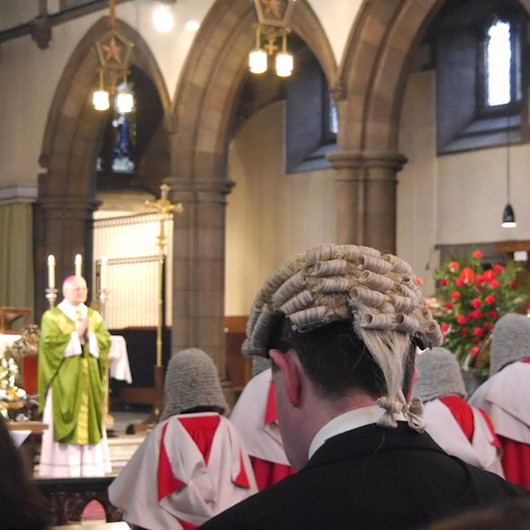
“These men and women serve the nation in a high office and come here to ask the Lord’s blessing upon this year’s work that they carry out on our behalf,” Archbishop Cushley noted in his homily.
“Know that we appreciate the difficult and complex tasks that you have and the duties that you perform – which are very onerous – on behalf of us all and that you be assured of our prayers and our support for all that you do to apply the law of the land with virtue and with justice and with mercy.”
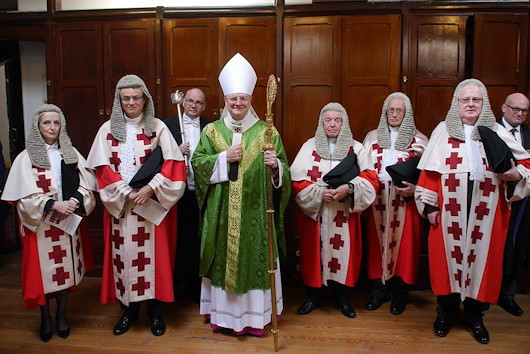
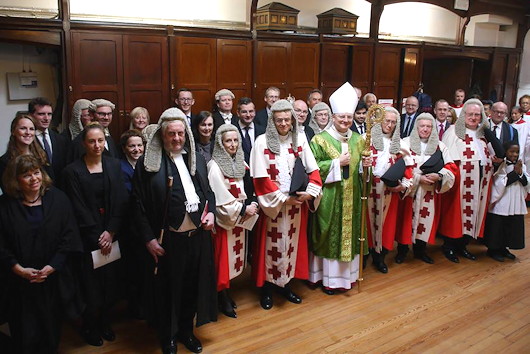
Tuesday 9 February 2016

For 175 years, the United States was a consciously anti-conservative country. But after the Second World War, that changed entirely. Daniel McCarthy looks at the mind of Russell Kirk and how the horrors of war led to the birth of American conservatism.
Twenty-first century scientists have described their collaboration with the remarkable thirteenth-century polymath Bishop Grosseteste in exploring some of the secrets of the rainbow.
Christopher Howse tells us what the tiny church of St Peter’s, Charney Bassett in Oxfordshire has in common with St Mark’s in Venice.
Alex Massie looks cold and hard at whether the Conservatives really could become the second-largest party at the upcoming Scottish Parliament elections.
After ninety years and comprising twenty-one volumes, the Oriental Institute’s dictionary of the Akkadian language has been completed.
The Irish Arts Review examines the curious case of Dublin Airport’s original terminal — a design far ahead of its time but the origins of which are murky.
If prices as well as almost every opinion poll show the public prefer traditional-looking homes, then why doesn’t the market respond by building them?
And finally, Margaret Thatcher’s former home in London is on the market.
Remembering James III & VIII
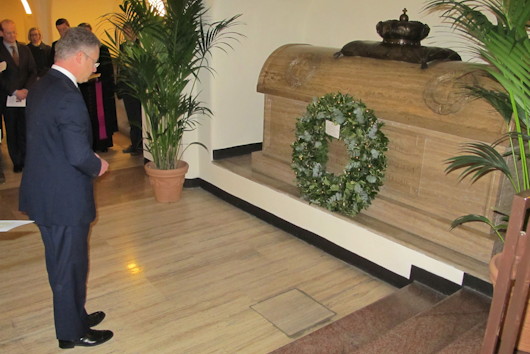
On the two-hundred-and-fiftieth anniversary of his state funeral in Rome, James III & VIII was remembered with a wreath-laying by Her Majesty’s Ambassador to the Holy See, Nigel Baker. The message on Nigel’s wreath read simply ‘In memoriam – James Francis Edward Stuart – ‘The Chevalier’ – 1688-1766’.
As the Ambassador notes in his blog post:
[O]ur simple wreath-laying ceremony was, in a way, one of historical reconciliation. The Chevalier always considered himself a patriot, and his court in exile welcomed Britons of all political and religious stripes. His younger son, Henry Benedict, Cardinal York, received a pension from the British Crown after his lands had been seized by Napoleon, and the Prince Regent offered to contribute to the magnificent Stuart monument by Canova that can still be seen in St Peter’s. The tomb in the crypt where I laid the wreath was restored by Queen Elizabeth the Queen Mother, through the good offices of my predecessor, Sir D’Arcy Osborne, in the early 1940’s. And in 2012 HRH The Duke of Gloucester unveiled a restored Coat of Arms of Cardinal York in the Pontifical Scots College, where the original Stuart gravestones had been transferred.
James III was the last of the Jacobite claimants to the English, Scots, and Irish thrones to be recognised by the Pope. He was succeeded in the line by his eldest son Charles (Bonnie Prince Charlie) and, after Charles’s death, by James’s second son Henry, who — having been ordained a priest, then a bishop, and being created a cardinal — was generally known as the Cardinal Duke of York.
Cardinal Comastri — Archpriest of St Peter’s Basilica, President of the Fabric of St Peter’s, and Vicar General of the Vatican City State — took part in the ceremony and also present were Lord Nicholas Windsor, and the Rectors of the Venerable English College, the Pontifical Scots College, the Pontifical Irish College, and the Pontifical Beda College, the Polish Ambassador to the Holy See (in honour of James’s wife Queen Maria Clementina), and the Irish Ambassador to the Holy See.
“The presence of the Irish ambassador to the Holy See,” Nigel notes, “also reminded us of the importance of commemorating together, rather than remembering apart. The past leaves many wounds. But do not underestimate the healing power of history and remembrance, done well.”
Also a sign, one might add, of what good value we get out of this most unique of British diplomatic postings.
Friday 8 January 2016

– Ross Douthat’s sensitive and thoughtful commentary on the state of the Catholic church (in the New York Times, of all places) has previously sparked apoplexy on the part of liberals, hilariously inspiring a host of bien-pensant establishment lefties to point out he has “no professional qualifications for writing on the subject”.
In a recent blog post, Douthat points out how difficult it is to engage in dialogue with lefty Catholic thinking given that it often assumes we can reinterpret anything whenever we want while ignoring centuries of fervent intellectual inquiry and church teaching. For these liberals, it is always Catholicism: Year Zero.
– The British writer Tibor Fischer is no conservative, but he’s often written how ridiculous it is for people to claim the Viktor Orbán is a dictator, whether in the Guardian or in Standpoint. (I myself had to take to the pages of the Irish Times to defend the Hungarian PM.)
Now Fischer writes in the Telegraph asserting that Viktor Orbán is no fascist: he’s David Cameron’s best chance at reforming the European Union.
– Still in Hungary, the British Embassy in Budapest is moving out of its home of nearly seventy years and into the recently vacated Dutch embassy.
– Everyone loves the leader of the Scottish Conservatives, Alex Massie says. But still no one will vote for her.
– Agnostic Southern Episcopalian chain-smoking monarchist with a penchant for misanthropy: Florence King, RIP.
– Speaking of misanthropy, is Groucho Marx’s humour nihilist? Shon Arieh-Lerer thinks Lee Siegel’s book might be overthinking things a bit.
– And finally, the United Nations Library in New York has announced which of its books was checked out the most often in 2015: Immunity of heads of state and state officials for international crimes.
Caledonian Expedition
Sun, sand, champagne, Scotland: there’s not much more you could ever want, but to have an alignment of these four in the month of October is rare. It had been quite some time since the Cusackian feet had last graced the cobbles of the beloved ‘auld grey toun’ – the Royal Burgh of St Andrews – but a friend got in touch on a Monday morning with the provocative text “Scotland Friday?” I couldn’t resist. (more…)
Papal Mace for St Andrews
Archbishop Presents New Mace to Scotland’s Oldest University Amidst 600th Anniversary
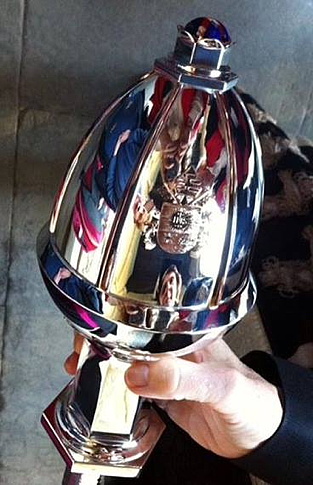
Above: The 600th Anniversary Mace.
Below: The University’s three medieval maces:
St Salvator’s College, 1461; Faculty of Canon Law, circa 1450; Faculty of Arts, 1416.
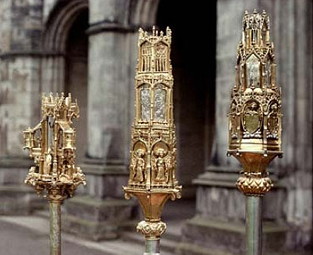
ST ANDREWS University already boasts the world’s finest collection of medieval maces, but a new ceremonial mace was added to the university’s hoard recently. In honour of the University’s six-hundredth anniversary, the Most Rev Leo Cushley, Archbishop of St Andrews & Edinburgh, has presented the institution with a new ceremonial mace on behalf of the Catholic Church.
“This completes a triple recognition of the University St Andrews,” said Dr John Haldane, the University’s professor of philosophy.
“During his visit to Scotland at the outset of this decade, Pope Benedict referred to the university beginning to mark the 600th anniversary of its foundation, then last year Pope Francis sent a message of congratulation, and now his office has granted permission for the inclusion of his coat of arms on the head of a mace commissioned to mark the completion of several centuries and the beginning of who knows how many more.”
The silver mace with gold rose details was crafted by Hamilton & Inches of Edinburgh, who also constructed the mace of the Faculty of Medicine at St Andrews over a half-century ago. Their master silversmith Jon Hunt designed the mace, in consultation with Prof Haldane.
The mace’s head is reminiscent of Brunelleschi’s dome of Florence Cathedral, recalling St Andrews’s links with the Continent which were foremost in the University’s first century and a half while it was a Catholic institution. Atop the head a saltire design is incorporated, referencing the apostle who gave his name to both the Royal Burgh and the University as well as the country who’s first university St Andrews is.
Heraldic shields display the arms of the University and of Pope Francis who invoked “upon all the staff and students of the University, past and present, the abundant blessings of Almighty God, as a pledge of heavenly peace and joy”. (more…)
The Crowned Banner
The Emblem of the Scottish Parliament
Legislatures often have their own symbols. Often these are appropriated or stylised versions of national emblems. Stormont uses a flax plant. Some time ago Westminster adopted the Tudor portcullis which now represents the Parliament of the United Kingdom — in green for the Commons or in red for the Lords.
 In Scotland, however, the unicameral parliament has adopted a crowned banner as its distinctive insignia. (For previous posts on prominent emblems of modern Scottish design, see the Clootie Dumpling and the Daisy Wheel). The crown expresses authority — ultimately the sovereign power of the monarchy — while the corded banner hanging from a pommelled pole displays the Saltire, Scotland’s national flag. While early versions of the emblem were in blue, it is now standard that the symbol be depicted in purple, long a colour associated with Scotland through the national florae of heather and thistle. (more…)
In Scotland, however, the unicameral parliament has adopted a crowned banner as its distinctive insignia. (For previous posts on prominent emblems of modern Scottish design, see the Clootie Dumpling and the Daisy Wheel). The crown expresses authority — ultimately the sovereign power of the monarchy — while the corded banner hanging from a pommelled pole displays the Saltire, Scotland’s national flag. While early versions of the emblem were in blue, it is now standard that the symbol be depicted in purple, long a colour associated with Scotland through the national florae of heather and thistle. (more…)
Flags, Northern Ireland, and the Union
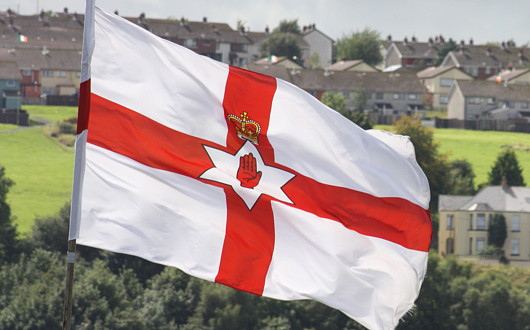
Flags have been in the news of late, perhaps as a late hangover of the disruptive protests over Belfast City Council’s decision to fly the Union Jack from Belfast City Hall only on the United Kingdom’s designated flag-flying days. Ironically, this would have brought the Six Counties further in line with normal British practice, but disgruntled unionists viewed it as a diminution of “their” flag and a bit of a fracas ensued with the once-traditional death threats and intimidation returning.
The BBC raised the issue of how Scottish independence might affect the Union Jack. (Pedants only refer to the British flag as the “Union flag”, but the Flag Institute points out both terms are perfectly acceptable). Scottish independence would have no automatic effect on the flag whatsoever, but it has provoked a round of speculation over what changes, if any, should be made to the Union flag.
Then Richard Haass, the American diplomat charged with chairing the inter-party talks on unresolved issues in the Six Counties, waded into matters vexillological when he wrote to party leaders seeking their views on the possibility of a new flag for Northern Ireland. (more…)
The Palace of Holyroodhouse
HOLYROOD IS SUCH a pleasant spot, despite the recent intrusion of an ostentatiously ugly government building designed by a Spanish architect. The other day, while visiting Edinburgh, I heeded the recommendation of the Prettiest Schoolteacher in Clackmannanshire to sample the burger at the Holyrood 9a. It was quite delicious, though not perfect, and was splendidly washed with a pint of Kozel (most un-Caledonian, I concede, but you can get Deuchars in London, you know).
Afterwards, our little party decided to have a little wander down Holyrood Road towards the Palace of Holyroodhouse, the epicentre of the Scottish monarchy.
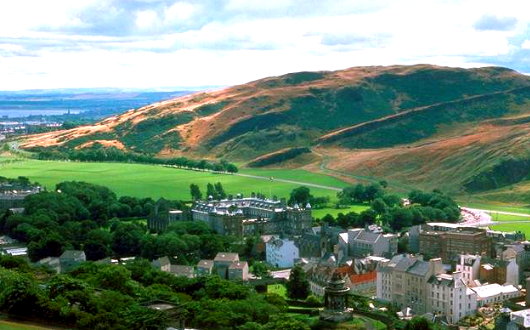
Nestled between Calton Hill and Salisbury Crags, the Palace sits at the end of the Royal Mile that runs between it and Edinburgh Castle. With the Old Town to its west, the expanse of Holyrood Park flows off to the south and east of it. (more…)
Best Universities in the World
From north to south, a completely arbitrary and biased accounting
WHILE UNIVERSITY rankings within countries have been popular for some time now, especially in the United States and United Kingdom, it’s only been in the past decade or so that worldwide rankings of universities have come to the fore. The most widely known is probably the Academic Ranking of World Universities produced by Shanghai Jiaotong University, alongside the QS World University Rankings from the firm Quacquarelli Symonds, and the T.H.E. World University Rankings from the weekly magazine Times Higher Education. All such ratings employ varying statistical matrices and methods of divination obscure to the outsider but which, one supposes, must have some form of merit. They are more useful for gaining a general impression of the place of a university rather than comparing and contrasting two or more particular institutions.
The aforementioned ranking structures are rather to formal for us to gain all that much knowledge from. Personal interactions, reputation, age, style of architecture, and other such factors carry much greater import when I judge universities. Oxford and Cambridge, whether you like it or not, are still the top universities in the world, even if they might not be our favourites. You just can’t beat them. While they might not be as much fun as other places, they come closest to achieving the balance of age, tradition, interesting people, serious research, good location, and general niftiness.
For a certain type of person, Harvard remains paramount among American universities, but to be a Harvard undergrad has carried a certain social stigma in our quarters for the past two or three decades. Harvard Business School, however, remains perfectly acceptable. In the Ivy League, Yale, not Harvard, is king, followed by Brown (not thanks to its radical professoriate but rather due to the strong Continental infiltration amongst its studentry). Dartmouth is the fun #3 of the Ivies, while the rest are forgettable (well, Princeton’s not bad really — it has the Whitherspoon Institute — but Cornell, Columbia, and Penn are yawn-worthy).
Up to this point, we have been speaking generally, but there are topical institutions of course. If you really must study ‘business’, then there’s Harvard Business School or INSEAD. Are there any other business schools of actual note? In the military realm, Sandhurst is the unquestionable king. The École royale militaire in Brussels is up there — being Catholic, Francophone, and monarchic attracts good elements from outside Belgium. In the States, there is the Citadel and VMI, but not much else (the federal ‘service academies’ have poor reputations except for Annapolis). One doesn’t hear much about Saint-Cyr these days.
Speaking of France, the reason one can’t come up with proper rankings is because some institutions or groups of institutions would be entirely outside it. The grandes écoles are the best example. They are superbly elitist, the absolute top, but they mostly exist in that little French world, with all its delights and limitations.
But for ‘topical’ institutions, the University of London has plenty: SOAS, LSE, the Cortauld, the various institutes of the School of Advanced Study, etc., etc.
There are also those interesting little schools of art history and conservation, attached to museums like the V&A or auction houses like Sotheby’s and Christie’s. The École du Louvre, however, must be the queen regnant of these schools.
Charles Taylor’s presence at McGill alone makes it worthy of note, but one suspects there are other strengths at the university. At any rate, it is still a perfectly respectable place to be an undergraduate. Boston College is also quite strong at the postgrad level, except in the theology school where heresy is widely believed to be thriving. Given the wealth and particularity of America’s universities, there are small and unknown centres of excellence in many unexpected places (for example the quite strong literary translation centre at the University of Rochester).
Rome’s universities of both church and state have shabby academic reputations but still attract for being Roman. One always hears seminarians complaining about the Gregorian, but no one can never really complain about Rome, and being a student or a seminarian is as good a reason to be in Rome as any. Rome also has John Cabot University, an ‘American’ institution divided between Americans on their semester abroad and the full-timers (often the layabout members of larger European families, who also frequent the American University of Paris).
And of course many of the Italian universities are not so much places of learning as conspiracies for the avoidance of unemployment on the part of their academics and administrators. Regrettably, much Italian talent moves abroad for higher salaries and better working conditions (Cavalli-Sforza, to name but one, at Stanford), but the handful of scuoli superiori (e.g. the Scuola Normale in Pisa) still maintain their dignity.
In Spain, Salamanca is well-regarded, and there are a number of newer, private, properly Catholic entities that have been created. Of course, Opus Dei are very proud for having created the University of Navarre ex nihilo. Portugal, meanwhile, has yet to recover from the Marques de Pombal’s disastrous eighteenth-century reform of Coimbra.
If you’re one of those people who actually wants a proper education then, for better or worse, you must go to America. Thomas Aquinas College in California and St. John’s College in Maryland might be the last genuine places of higher learning in the European world. Attempts are being made to found a British Catholic version, and many imitations (Catholic, Protestant, and secular) exist around the United States.
If I could name some other honorable mentions in addition to those featured below, I would add Dublin (Trinity, that is), Bristol, the Collège d’Europe, Leiden, Leuven, Utrecht, Uppsala (and all the old Scandos), Heidelberg (and a dozen other German universities), King’s Halifax, Trinity College in Toronto, some parts of Berkeley, York for graduate study but not undergrad, the C.E.U. in Budapest (despite being a Soros project), and Exeter and Warwick aren’t bad really. Some universities, like the Jagiellonian in Kraków or the Charles in Prague, must be mentioned due to age, but I have to plead ignorance as to any knowledge of their current state.
I’m probably leaving out a dozen places that deserve a mention but I’ve forgotten; such are the limits of our fallen human nature. Here follows, arranged from northernmost to southernmost, our completely arbitrary and biased accounting of the six best universities in the world. (more…)
Fra Freddy, Rest In Peace
Yesterday, I was very saddened to hear of Fra Freddy’s death. Fra Freddy was a legendary character whom I was introduced to in my first year at St Andrews. He was invited to speak to the Catholic students most years on some subject or another — an introduction to prayer or a lenten meditation. I was quite pleased when he was so taken with a poster I designed to advertise one of his talks that on his way back to Edinburgh he nipped out of the car at the last minute and grabbed a large copy. Fra Freddy was an old-fashioned stick-in-the-mud with a good sense of humour, but he also had the capability to surprise with a kind word when you least expected it.
Fra Fredrik John Patrick Crichton-Stuart was born September 6, 1940 to Lord Rhidian Crichton-Stuart (son of the 4th Marquess of Bute) and his wife Selina van Wijk (daughter of the Ambassador of the Queen of the Netherlands to the French Republic). He was raised in Scotland and North Africa (where his father was British Delegate to the International Legislative Assembly of Tangier) and was educated first at Carlekemp in North Berwick and then at Ampleforth. He joined the Order of Malta in 1962, later being named the Delegate for Scotland & the Northern Marches. In 1993 he was appointed Chancellor of the resurrected Grand Priory of England. Fra Freddy became Grand Prior himself when his cousin, Fra Andrew Bertie, died in 2008 and was succeeded by the then-Grand Prior of England, Fra Matthew Festing.
Fra Freddy was a devoted follower and promoter of the traditional form of the Roman rite. He joined Una Voce Scotland in 1996 and became secretary in 2000. Two years later he was named councillor and senior vice-president of FIUV, the International Federation ‘Una Voce’, and briefly served as its president in 2005.
Over the past year or so Fra Freddy had been varying ill but seemed to recover. I am told he was found dead yesterday morning, still clasping his breviary. He was well-known in Edinburgh and beyond, and he will be missed by his many friends as well as those who worked and volunteered with him or interacted with him in his charitable activities.
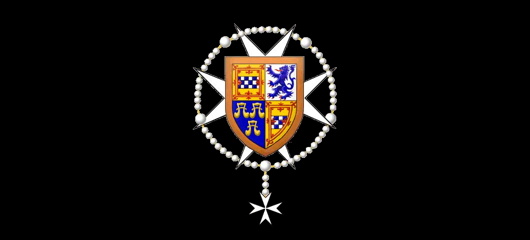
FREDERICK JOHN PATRICK CRICHTON-STUART
Grand Prior of England
of the
Sovereign Military & Hospitaller Order of St John
of Jerusalem of Rhodes and of Malta
6 September 1940 – 14 June 2011
Eternal rest grant unto him, O Lord,
and let perpetual light shine upon him.
May he rest in peace.
Amen.
Scotland in Snowfall
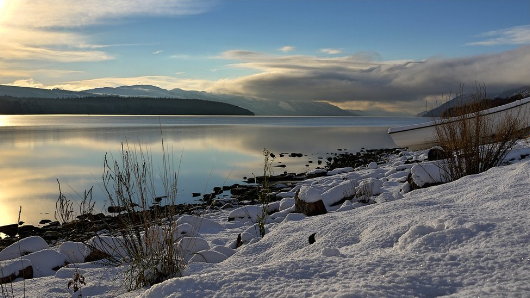
Scotland has been enveloped in snowfall, and the BBC has put a photo gallery up of reader-submitted images of the recent precipitation. The In Pictures feature of BBC News Online’s Scottish section has for years been one of my favourite parts of the website, offering a new series of photographs every week varying from the startling to the quotidian. Above is Michael Rennie’s view of a rather peaceful-looking Loch Ness. (more…)
Search
Instagram: @andcusack
Click here for my Instagram photos.Most Recent Posts
- In the Courts of the Lord February 13, 2025
- American Exuberant February 10, 2025
- Crux Alba Journal Launch February 10, 2025
- The Year in Film: 2024 February 10, 2025
- Articles of Note: 27 January 2025 January 27, 2025
Most Recent Comments
- on When an American aristocrat meets a European Grand Duke
- on The Year in Film: 2024
- on Jesuit Gothic
- on The Borough Synagogue
- on No. 82, Eaton Square
- on Christ Church
- on The Last Will and Testament of Louis XVI
- on Amsterdam
- on Season’s Greetings from the Seventh
- on Season’s Greetings from the Seventh
Book Wishlist
Monthly Archives
Categories

